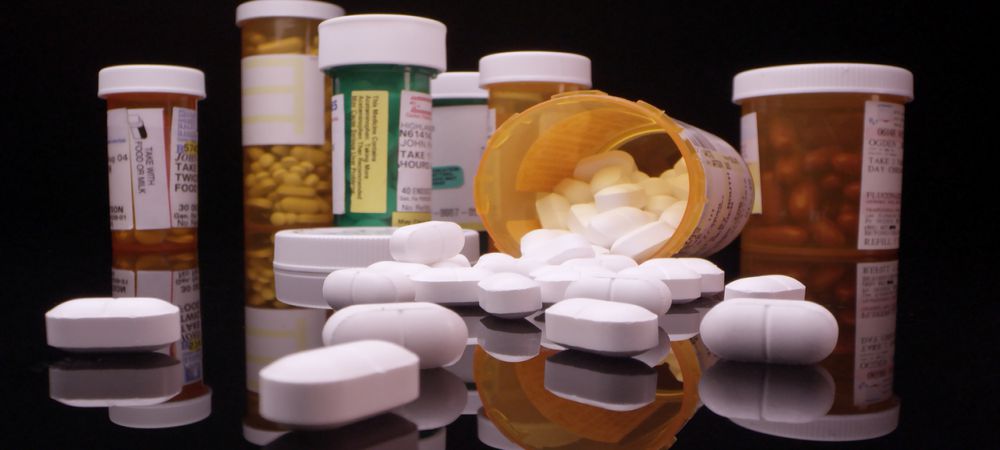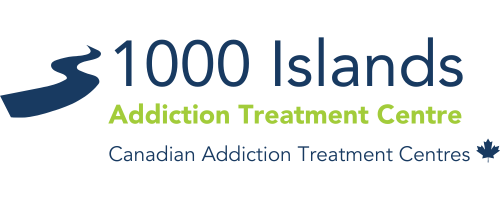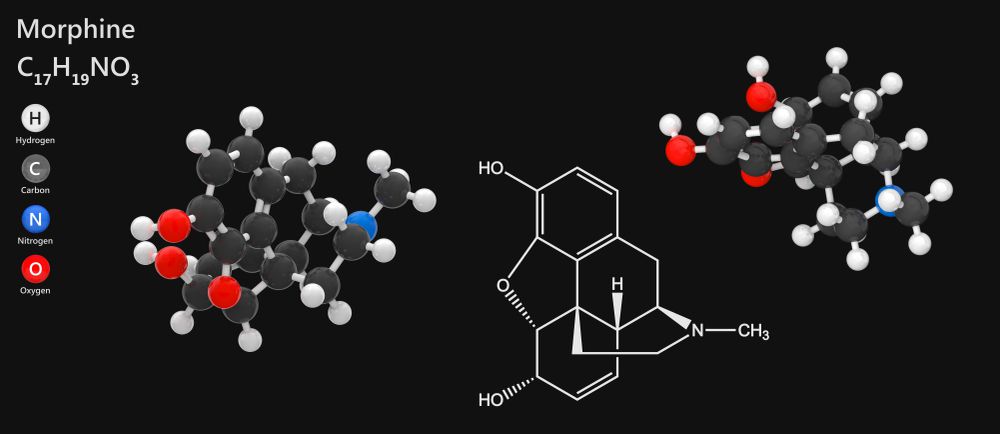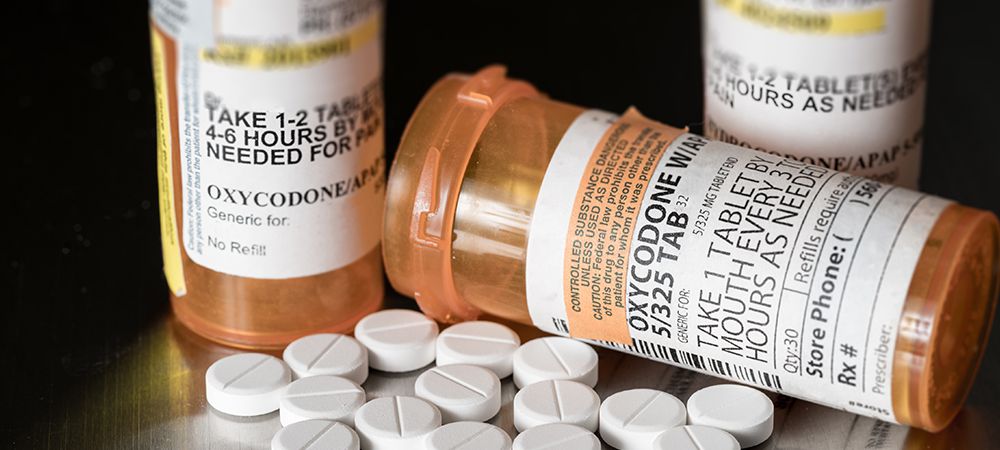
Addiction Treatment: What to Expect During Opioid Withdrawal?
Opiate withdrawal signs can be very intense. To get through the process, you need knowledge of what to expect during opioid withdrawal. With this knowledge, you can prepare for the possible severity and side effects of opioid withdrawal.
Generally, most people are aware of how unpleasant the opioid withdrawal process can be. But, it can get worse. The opioid withdrawal process can be life-threatening. During withdrawal, death can, and does, happen. In most cases, it’s usually because opioid withdrawal complications are monitored inadequately and sometimes underestimated.
The opioid withdrawal symptoms include a flu-like illness that is objectively moderate but subjectively intense. Some of the symptoms include lacrimation, nausea, piloerection, insomnia, dysphoria, pupillary dilation, muscle aches, rhinorrhea, vomiting, diarrhea, etc.
So, what can you do to prevent death during opioid withdrawal? The answer is right there in the final two clinical symptoms above — vomiting and diarrhea. Typically, continuous vomiting and diarrhea may result in hypernatraemia, dehydration, and eventually heart failure if you refuse to undergo proper treatment.
Where possible, it’s better to work with healthcare professionals to manage withdrawal syndrome. This way, you can come off opiates addiction gradually to lessen the symptoms.
Withdrawal is definitely not a cakewalk. However, it’s possible to go through with consistency and dedication. Fortunately, you’re taking a massive step by reading this article. Learning about what to expect during opioid withdrawal and tips to get through it is key to a successful detox.
Understanding Opioid Dependence and Addiction
Opioids are significantly effective at relieving pain. Most especially, short-term pain relating to post-surgical pain or injuries.
If you indulge in using opioids over the long-term, you may develop a tolerance to this medication. Essentially, tolerance means you will always need to increase your doses to attain the necessary pain relief you want. Over time, it is very easy for this situation to lead to addiction especially when the drug usage is poorly monitored.
In some cases, this addiction can include cocaine, heroin, and other illegal drugs. However, opioid addiction can as well involve different prescription medications often used in treating pain. Some of these drugs include:
- Oxycodone
- Codeine
- Morphine
- Methadone.
As you continually use this drug, your body may become dependent on it. This means you will experience different opioid withdrawal symptoms if you decide to stop using the drug.
With opioid usage, there’s psychological and also physical dependence. Psychological dependence is known as addiction. As an addict, you tend to go through several uncontrollable cravings for opiates. Regardless of the risk or harm, it brings to you, your body will always crave opioids intensely.
Going through these experiences can only mean your intake level is more than the doctor’s recommendation and may cause an overdose. Also, addiction to opioids means that you go through illegal steps to obtain more drugs.
In general, you can be physically dependent on opioids even when you use your medication according to the prescription. If you feel you’re becoming dependent, it’ll be good to consult your specialist or physician. This way, they can help you reduce the possibilities of developing an OUD (Opioid Use Disorder).
Understanding Opioid Addiction
Opioid addiction, otherwise known as Opioid Use Disorder, is defined by the illegal misuse of opioid medications. In most cases, people who do this have the intention of avoiding withdrawal symptoms or getting high.
Random signs of opioid misuse or abuse include:
- Taking more drugs than the given prescription
- Using other opioid medications whenever you’re out of your prescribed drug
- Using opioid medicines for different reasons
- Feeling that opioid medication limits your daily functioning
- Picking the drug over activities at home, school, or work
- Not abstaining from the drug even when it causes mental problems or increasing physical issues.
- Using the medication even when it causes issues between you, your friends, or your family.
What is Opioid’s Effect on Your Body?
Opioids usually attach themselves to the opioid receptors in the spinal cord, brain, and gastrointestinal tract. Whenever opioids bind to these receptors, they exert their effects.
Your brain manufactures natural opioids responsible for a whole host of influences, including decreasing pain, lowering the respiratory rate, and even preventing anxiety and depression.
Nevertheless, your system doesn’t produce opioids in large quantities. This means the production is not enough to treat any severe pain, for example, a broken leg. Also, your body doesn’t produce opioids enough to cause an overdose. Opioid drugs and other illegal medications mimic natural opioids.
These medications may influence your body in several ways:
- Opioids may affect the brain stem, which controls breathing and heartbeat, reducing coughing or slowing breathing.
- Opioids may also act on some regions of the brain known as the limbic system. The limbic system controls emotions and creates relaxation or pleasure.
- It works to lessen pain by altering the spinal cord, which communicates with the rest of the body from the brain.
What are the Symptoms of Opioid Withdrawal?
The withdrawal symptoms you’ll go through often depend on the withdrawal level you’re experiencing. Additionally, multiple factors may dictate the duration in which you’ll go through the withdrawal symptoms. This is why everyone experiences withdrawal differently. Notwithstanding, there’s usually a timeline for work progression and symptoms.
Early signs usually start between the first 24 hours after quitting the usage. The signs include:
- Restlessness
- Anxiety
- Excessive seating
- Yawning
- Runny nose
- Eyes tearing up (Lacrimation)
Other symptoms, which can be more intense, start after the first day or beyond. They include:
- Abdominal cramping
- Nausea and vomiting
- Rapid heartbeat
- Goosebumps appearance on the skin
- Possibly blurry vision
- High blood pressure
- Diarrhea
Even though it’s painful and very unpleasant, opioid’s symptoms usually improve within 72 hours. However, you’ll notice a significant decrease in acute pain and symptoms. Also, how long opioid withdrawal will take depends on your addiction severity and frequency of use.
For instance, heroin is usually removed from your body faster, and symptoms will kick-in after 12 hours of the last usage. If you’re using methadone, it may take a day and a half for symptoms to start.
Some experts point out that addiction recovery takes at least six months of total abstinence. During this period, you may experience several withdrawal symptoms. This is known as protracted abstinence. So, if you’ve any ongoing symptoms, it’s crucial to discuss the symptoms with your opioid addiction treatment provider.
Related article: 8 Myths about Opioid Addiction
Timeline for Opioid Withdrawal: How Long Does it Take?
Generally, withdrawal symptoms will begin to develop immediately after opiates leave your system. The amount of time it’ll take you to complete the detox depends on the following factors:
- Your overall well being
- Your usage timeline
- Your addiction severity
- Your choice of opioids.
The Early Stages
Through the early stages of opiate withdrawal, the signs begin between 6 to 30 hours after quitting the drug. Still, the timing is dependent on the kind of opioid you’re using.
During the beginner’s stages of withdrawal, you may experience:
- Tiredness
- Sweating
- Body aches
- Irritability or anxiety
- Trouble sleeping
- Muscle pain
The Later Stages
About 60 to 72 hours after you stop taking the drug, symptoms are typically at their worst. During this time, your early signs can become more severe. Also, you may experience new symptoms such as:
- Diarrhea
- Nausea
- Vomiting
- Stomachache
- Chills
The Complete timeframe
The first week of withdrawal is usually the worst. However, be ready to experience symptoms that last longer. Typically, symptoms can last up to one month and linger for several months.
Opioid withdrawal symptoms that may last longer than one week include depression, tiredness, anxiety, and trouble sleeping.
What to Expect During Opioid Withdrawal
When you quit after becoming dependent on a substance like an opioid, your body will experience a detox period. This is where your body tries to get rid of the substance from the system. Notably, the detox stage in addiction recovery is essential for you to reach sobriety. So, what happens during opioid detox?
Detoxing involves withdrawal symptoms that often vary in intensity and length. For several people who struggle with addiction, the withdrawal process is a severe and daunting, difficult battle. However, detoxing from substances like opioids is better in a professional environment. Rehab facilities will give you the resources and tools you need to defeat this hurdle and reach sobriety.
Here is a procedure for opioid withdrawal and what to expect during opioid withdrawal:
The First Stage – Detox
The first step of opiate rehab and recovery is to undergo detoxification. During the detox process, you will be monitored and treated safely for withdrawal symptoms. This includes extreme fatigue, bone and muscle pain, insomnia, flu-like symptoms, anxiety, depression, and severe drug craving.
These symptoms can kickstart within a few hours and peak between 48 and 72 hours after the last dose. They will often recede after about a week, but some individuals may experience persistent symptoms for months.
Furthermore, if you’re very dependent on opioids with a poor health history, you may face a deadly risk following sudden withdrawal. This is why experts are better at overseeing the detox process. They will monitor your withdrawal and ensure you’re safe and as comfortable as ever.
It is essential to understand that detox alone is not an effective form of opiate addiction treatment. Detox addresses the physical dependency your body has on opiates. Still, counselling and behavioural therapy are necessary to address the psychological addiction and the reasons behind your drug use.
As the detox process progresses, the process becomes more uncomfortable. A patient in detox may experience:
- Dilated pupils
- Elevated blood pressure
- Gastrointestinal distress
- Goosebumps
- Fever
- Feeling hopeless.
The Second Stage – Maintenance and Medication
During opiate detox, you may consider using some medication to help alleviate withdrawal symptoms. The most prevalent drugs used during opiate detox are suboxone, buprenorphine, and methadone. These drugs are also useful for eliminating severe cravings after detox.
The Final Stage – Continuous Treatment
If you’re trying to overcome an addiction to opiates, it is often best to receive care at a residential treatment center. There are several benefits of residential treatment. However, the most crucial advantage is that it provides a structured environment free of temptations and distractions.
Residential treatment for opiate addiction provides 24/7 care and support to help you focus on your recovery. There, you’ll learn new skills needed to live a drug-free life. It also provides a temporary escape from the daily stresses and responsibilities of home, work, family and other relationships so you can solely focus on recovery.
During residential treatment, you’ll receive medical support and therapy to address not only the physical effects of your opiate addiction but the psychological effects as well. A comprehensive approach that combines behavioural therapy, individual counselling, 12-Step support, drug testing, dual diagnosis and positive reinforcement is the most effective way to reduce opiate abuse.
Tips on How to Manage Opioid Withdrawal
Once you’re ready to kick your opiate habit, be aware that support is essential in managing opiate withdrawal. The more support you have, the better your chances of overcoming your addiction.
Below are a few tips on how to manage opioid withdrawal:
Professional Care
Rather than going through the withdrawal alone, consider registering at an opioid addiction treatment facility around you. In there, you’ll be monitored closely by a team of healthcare providers who will help keep you safe and help relieve your withdrawal symptoms.
However, if you’re going through your withdrawal at home, always ensure you keep in contact with your doctor. Keep the doctor up-to-date about everything going on with you, new symptoms if any, etc. Also, discuss medications they can prescribe that may be of help to you.
To cap it off, avoid being too confident about what to do and what not to do. This is because any mistake from your end may lead to relapse or recurrence. So, whatever you do, ensure your doctor has prior knowledge of it.
Hydration
During opioid withdrawal, you may lose bodily fluids through diarrhea and vomit. Drinking plenty of water is essential to maintain hydration within your body. Ultimately, it’s best to drink water that contains electrolytes, for instance, coconut water.
Take Hot Baths Regularly
Taking a hot bath will help alleviate the pain and muscle aches in the body. You can include Epsom salts in your water to provide magnesium for your body and help to soothe your muscles.
However, ensure to stay clear of hot water baths whenever you’re having a fever. Instead, you can use a heated compress to soothe your aching muscles.
Enjoy Proper Nutrition
If you consume high quantities of opiates, you may be deficient in specific nutrients during withdrawal. Eating a range of nutrient-dense foods, significantly those high in calcium, magnesium, and potassium, may help your body during recovery.
Engage in Daily Exercise
Mid or gentle exercise can help relieve some signs of withdrawal. Generally, exercise releases endorphins. These endorphins lessen anxiety and improve mood. Also, exercise can help you control your agitation.
Get a Healthy, Handful Distraction
Most of the symptoms of opioid withdrawal can be very challenging. Engaging yourself in activities that take your mind off these signs will provide relief. You can decide to do anything from watching a funny film to reading a book or hanging around supportive friends and family.
Ultimately, joining a support group and hanging around people going through somewhat similar experiences is helpful. It helps you feel relaxed and more comfortable sharing your experience with others.
Treatment Options for Opioid Withdrawal
Several treatment options are available for opioid withdrawal. These include:
In-patient Treatments
In-patient therapy is a type of treatment where you reside at the treatment centre. In-patient treatment is often helpful for people suffering from severe addiction. Also, it’s useful for those who struggle with specific challenges of mental wellbeing.
Undertaking your recovery in a rehab centre helps you avert the influences and temptations that provoke daily substance abuse. Also, living in a serene environment will aid your recovery faster.
Licensed in-patient rehab facilities often provide 24-hour intensive care and support. They also combine three stages of recovery into their rehab programs, i.e. growth, reflection, and detox. In-patient facilities focus on teaching you how to adopt a substance-free lifestyle and maintain sobriety.
This treatment plan typically involves a step-down method to help your transition from in-patient care to group or individual counselling.
Group therapy
Group therapy is a specific form of counselling used to treat psychological disorders, including substance abuse and addiction. Typically, it involves regular sessions where therapists work with several individuals receiving treatment for the same health issue.
People who participate in a therapy group usually take turns to share their feelings, struggles, goals, and experiences. Sometimes, therapy groups may focus solely on a specific recovery topic. An example is recognizing and avoiding triggers, or handling complicated family, peer, work, and other interpersonal relationships.
One of the most significant benefits of group therapy for addiction recovery is that groups give you the ability to bond with others. It also gives you an avenue to build a support system to connect with once you leave treatment.
Individual Psychotherapy
Generally, people suffering from addiction usually benefit from meeting a psychologist. Psychologists are experts with optimum training on how to help you learn coping mechanisms.
This will assist you in managing your life and mental health issues effectively without any shortcomings. They can also help with several other mental challenges common among people with opioid addictions.
Below is a quick highlight of what to expect during opioid treatment using individual psychotherapy:
Managing Your Pain
Several people start taking opioids because they are living with pain. Chronic pain is emotionally and physically challenging to manage. However, psychologists can help you learn strategies to maintain pain, attain a better quality of life overall, improve sleep, and function well, notwithstanding the pain.
Treating Other Problems
Most people dealing with drug addiction often have other mental issues such as depression, anxiety, PTSD, etc. Psychologists can assist you in managing or overcoming those conditions.
Addressing Drug Abuse Disorder
Typically, psychologists can help you understand why you started abusing the drug in the first place. They will take you through your history and help identify common triggers that often drives you to continue using the drug. Also, they can help you develop techniques to avoid common triggers or places.
Conclusion
Typically, opiate withdrawal can cause a range of distressing and uncomfortable symptoms. However, now that you know what to expect during opioid withdrawal, getting through the process is easier.
Knowing what to expect is the tip of the iceberg. As said earlier, opiate withdrawal is not always life-threatening. However, it’s capable of causing complications if you refuse to take proper treatments. Generally, there are several addiction treatment services available for treating opioid addiction.
Opioid withdrawal symptoms may come between 6 to 30 hours after your last dose. However, this may vary depending on the opiates you’ve been taking. Furthermore, you may experience prolonged symptoms even after 72 hours of your last dose. These symptoms can extend up to a week, depending on your level of addiction.
The severity of opiate withdrawal can be intense, so it’s better to have a doctor supervise your progress. Just like other addictions, opioid addiction treatment requires consistency and hard work. So, going through this recovery process with experts will help you attain sobriety without risks.
Call 1000 Islands Addiction Rehab & Treatment Centre for addiction treatment programs.
Related article: 6 Warning Signs of Opioid Addiction





